
DeGecko
gamer level 2
455 xp
455 xp
followers
4
4
Use my invite URL to register (this will give me kudos)
https://boardgaming.com/register/?invited_by=degecko
profile badges
...
...
...
...
recent achievements

Follower
Follow another gamer by clicking "Follow" after reading a review or viewing their profile.
Follow another gamer by clicking "Follow" after reading a review or viewing their profile.

Amateur Grader
Grade 10 more reviews or tips by clicking "Yes" or "No" in response to the question "Was this helpful?"
Grade 10 more reviews or tips by clicking "Yes" or "No" in response to the question "Was this helpful?"

Gave My First Grade
Grade a gamer's review or tip by clicking "Yes" or "No" in response to the question "Was this helpful?"
Grade a gamer's review or tip by clicking "Yes" or "No" in response to the question "Was this helpful?"

Rated 10 Games
Rate 10 games you have played.
Rate 10 games you have played.
Player Stats
Critic (lvl 1)
155 xp
155 xp
Explorer (lvl 0)
50 xp
50 xp
Professor (lvl 0)
50 xp
50 xp
Reporter (lvl 0)
20 xp
20 xp
About Me
Hi,
I'm a Belgian stand-up comedian / bass player who loves playing games. Basically my whole life is playing, wheter it's games, music or comedy :D.
I love games that combine elements and especially if the theme is right like Puerto Rico, Agricola, Vinhos, Funny Friends, ... But also simpler games like party games and such.










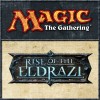
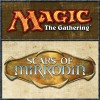
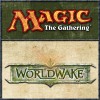

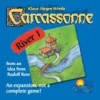

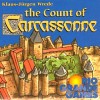
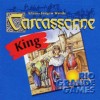








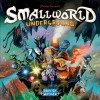


Carcassonne: King and Scout
Hey dude & dudettes,
As I explained in my [thread=686627]review[/thread] of [thing=18836][/thing] Carcassonne was the very first ‘Gamers Game’ I got to know. The board of our local youth club went on a weekend to plan the activities for the following year and after the hard work a friend threw Carcassonne on the table and explained it to us. I was sold from that moment on 🙂 . Actually, I liked it so much I actually bought it a few weeks later and after I got to know it a little better I started exploring the expansions like this one.
How did I get to know this game?
I saw it on the counter in a small gaming shop called ‘Red Dragon Games’ in Antwerp (mainly Warhammer) right around the corner of our gaming club. It was appealing and cheap so I picked up a copy, as well as [thing=18836][/thing] and [thing=12903][/thing].
What’s that theme?
The theme doesn’t change, but now the king is looking for the biggest city / castle and robbers roam along the roads.
And the components?
[thing=7707][/thing] comes in a mini-box and actually contains two seperate expansions: one for the original [thing=822][/thing]
game consisting of 7 tiles (5 new playing tiles with all new combinations, a ‘king’ and a ‘robber’ for scoring extra points) and one for the spin off [thing=4390][/thing] consisting of 5 tiles.
Right now I’ll only talk about the first one since I’ve never played the second one ;).
How does it work?
People that played [thing=13][/thing] once or twice will recognize this. The 5 playing tiles are mixed with the other tiles. The first player to build a city receives the ‘king’ tile. When another player builds a larger city, that player will steal the ‘king’ tile away and so will every next player that builds a larger city. The same goes for the ‘robber’ tile, only this happens when a long or longer road is built.
The player in posession of the ‘king’ tile receives 1 extra point per finished city at the end of the game. The players in posession of the ‘robber’ tile will receive 1 extra point for every finished road at the end of the game.
So how do you win again?
As in the basic game, you still win by having most points at the end of the game.
Any tricky parts?
Maybe a little one: You’ll have to keep track of what currently are the largest city and the longest road. Usually we do this by putting a spare meeple or another marker on a small improvised track.
So what exactly do I think about this expansion?
Well, I like it, but it has pro’s and cons of course. Let’s start with the bad news…
Con:
– It only holds a small amount of tiles.
– The rules can easily be applied without the expansion.
– If you only have one of the basic games, the other half of the expansion is quite useless.
Pro:
– It looks nice. The scoring tiles I mean.
– There are 5 new tiles that offer some new possibilities.
– If you do have both basic games it’s a nice 2-for-1.
– Well, it’s cheap…
Just check out the pictures of the tiles, maybe try the rules out and decide for yourself whether you’d spend the money on it or not.